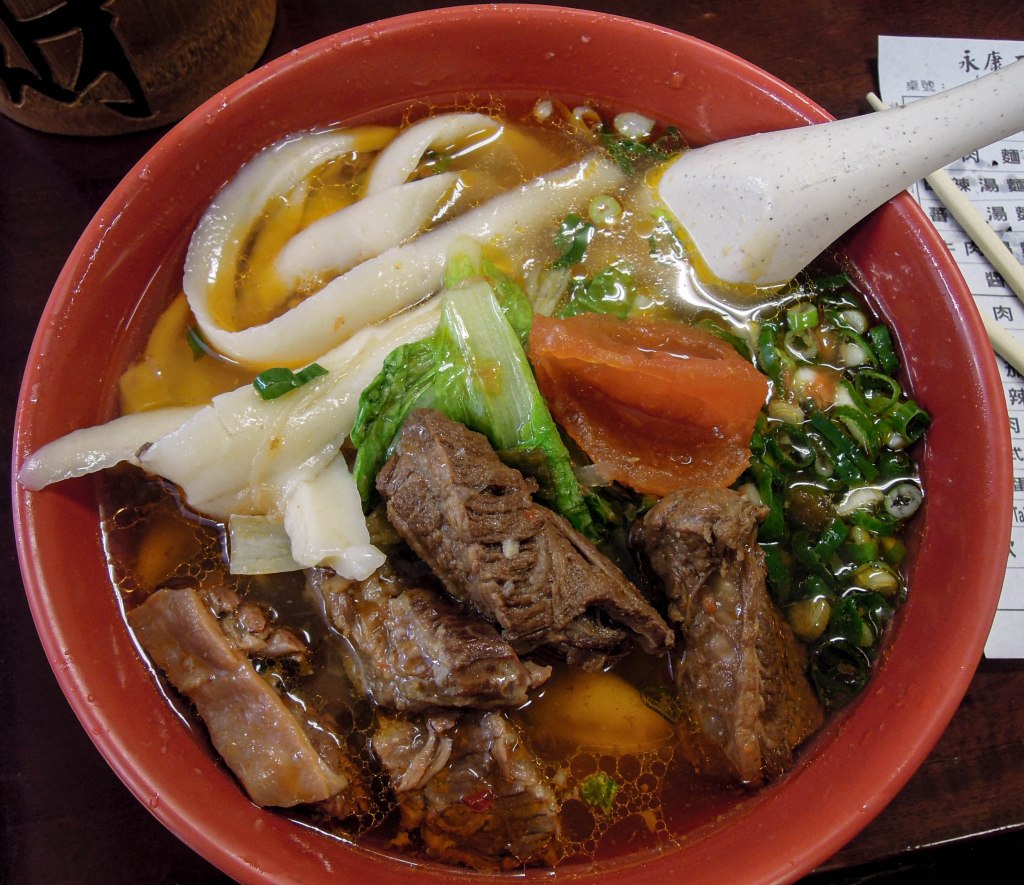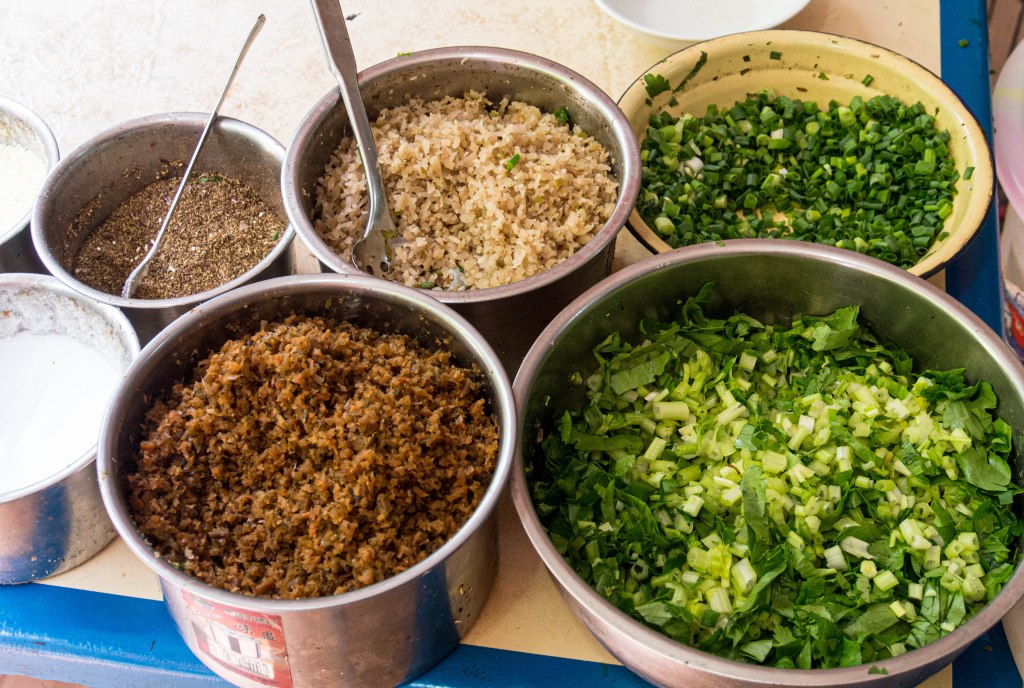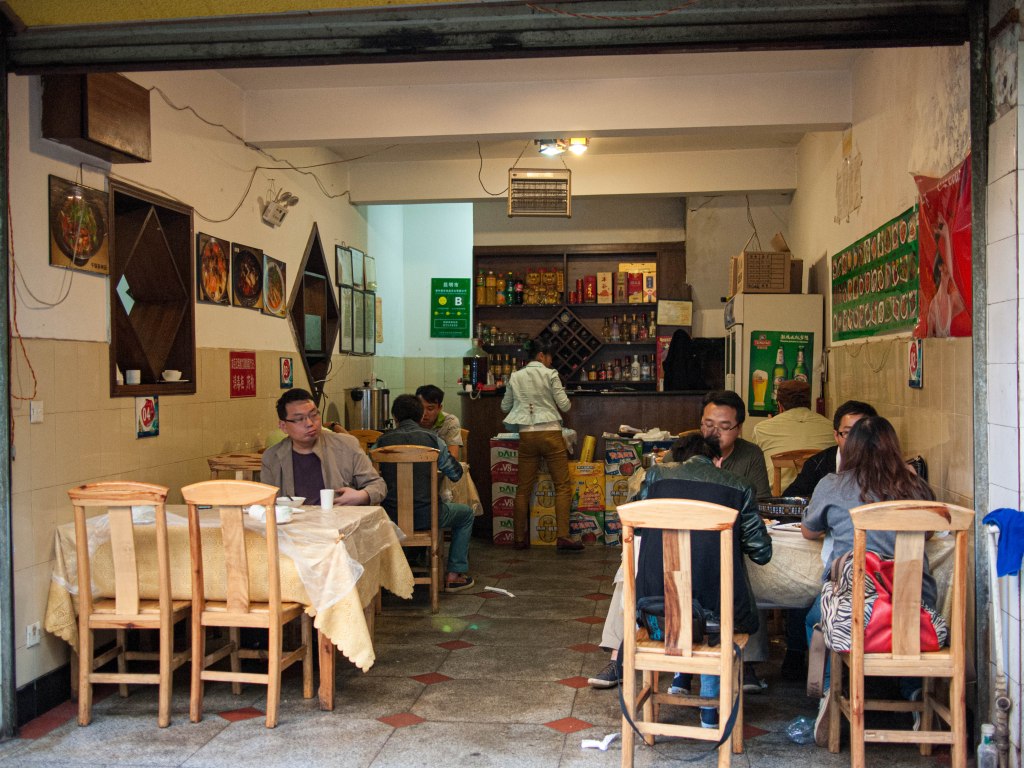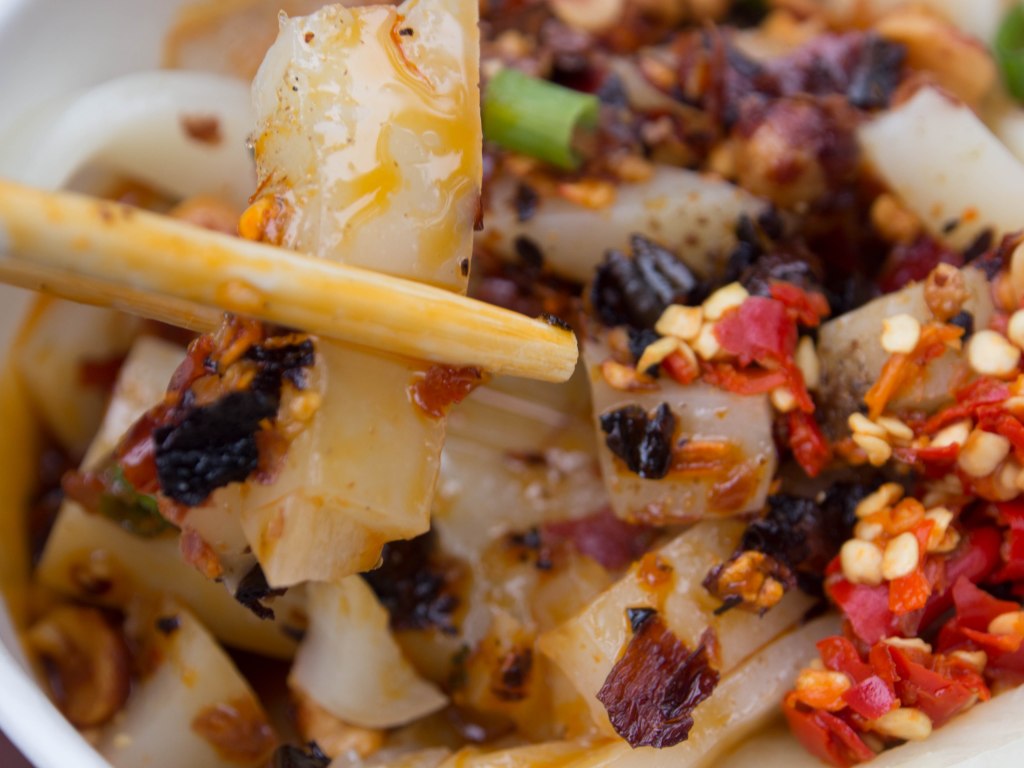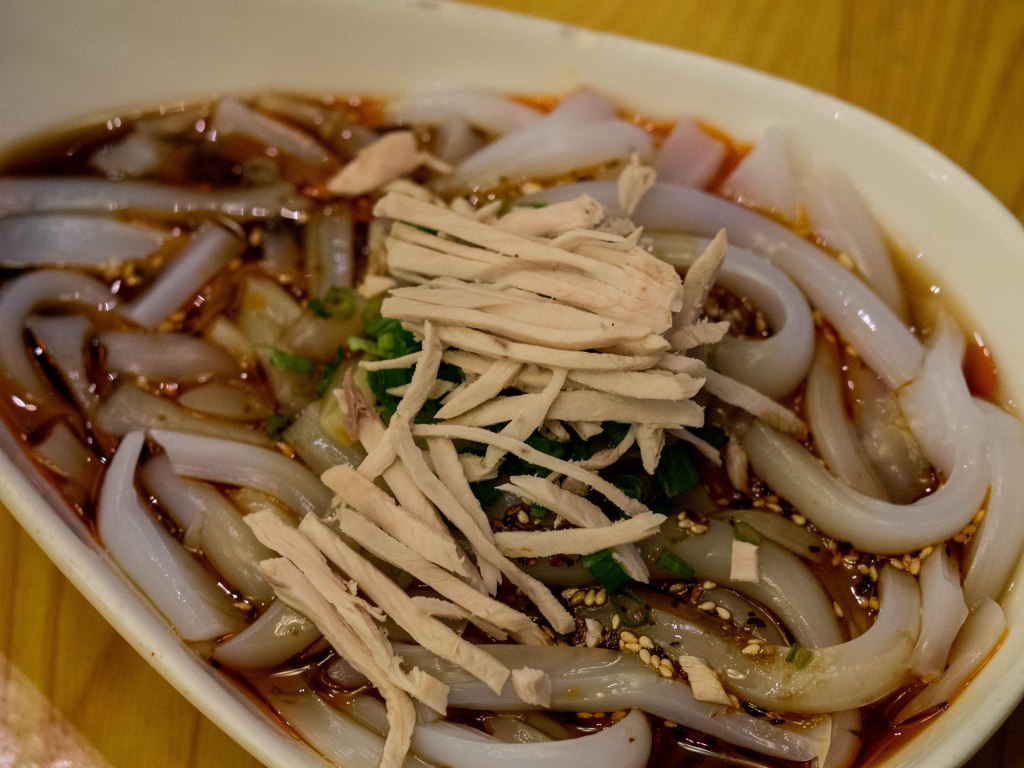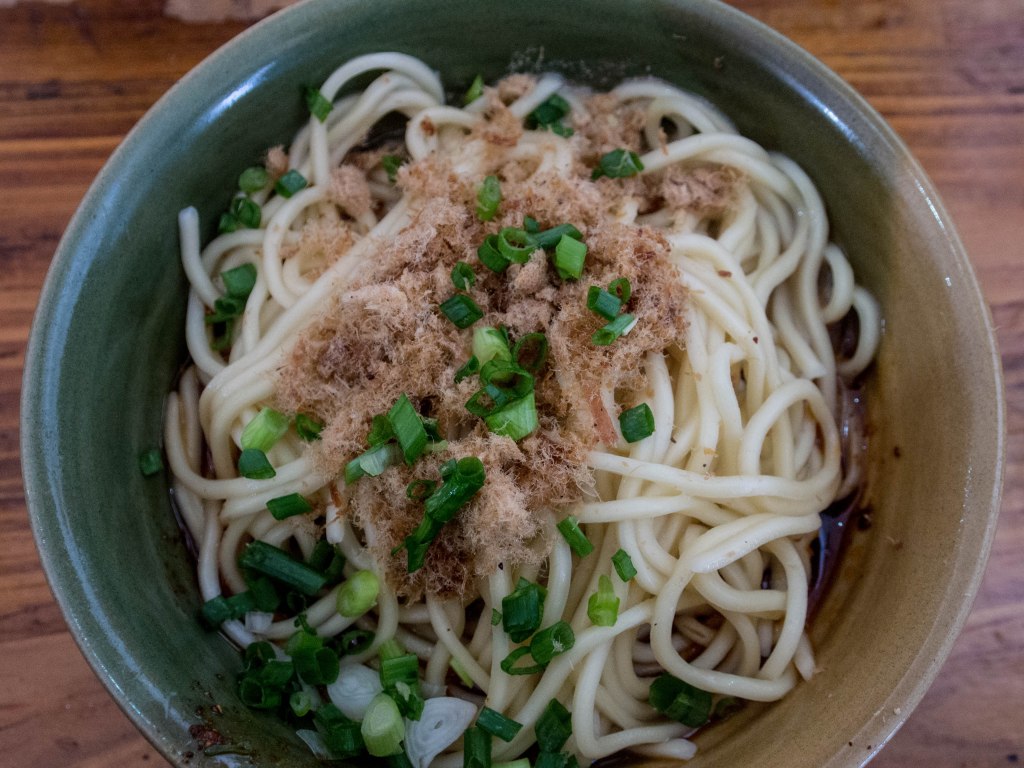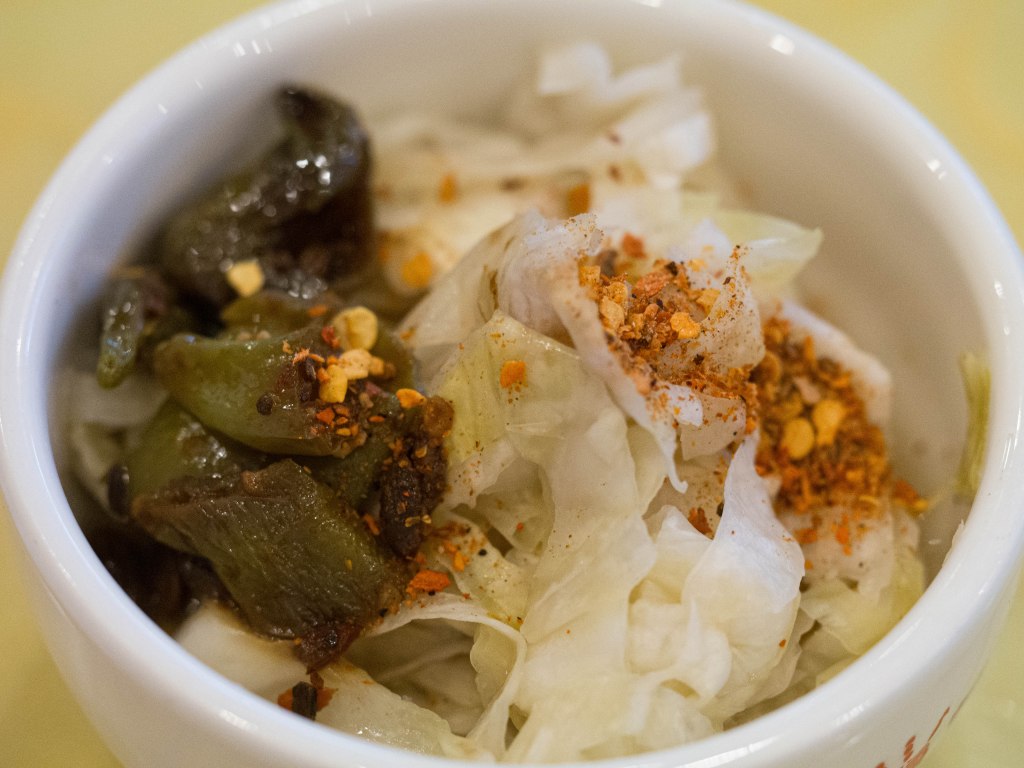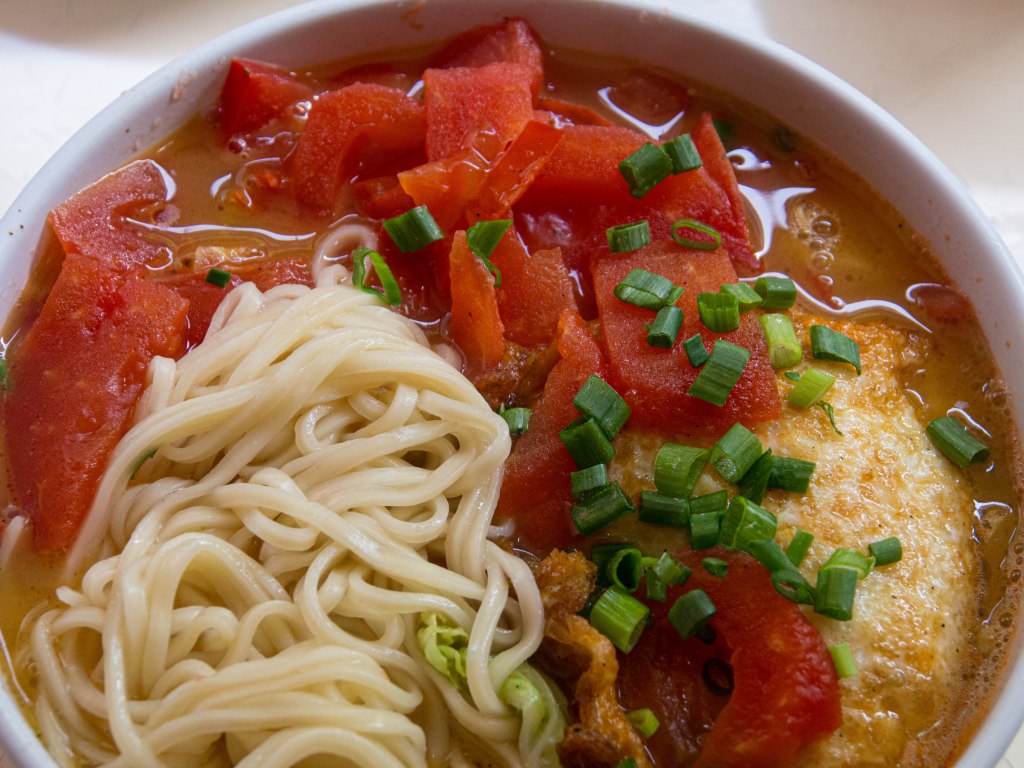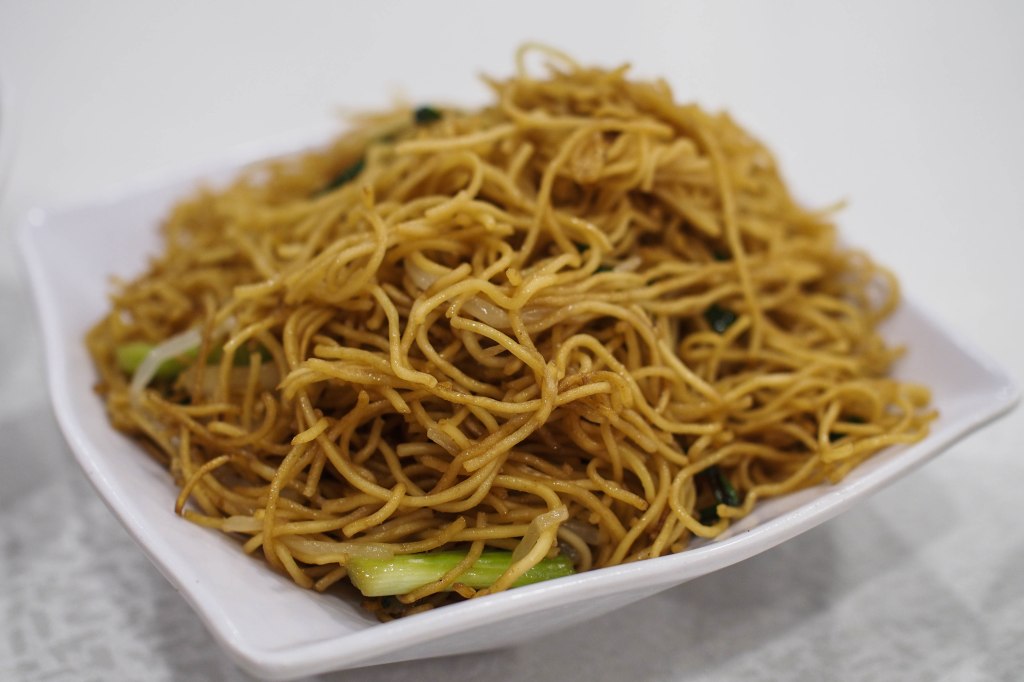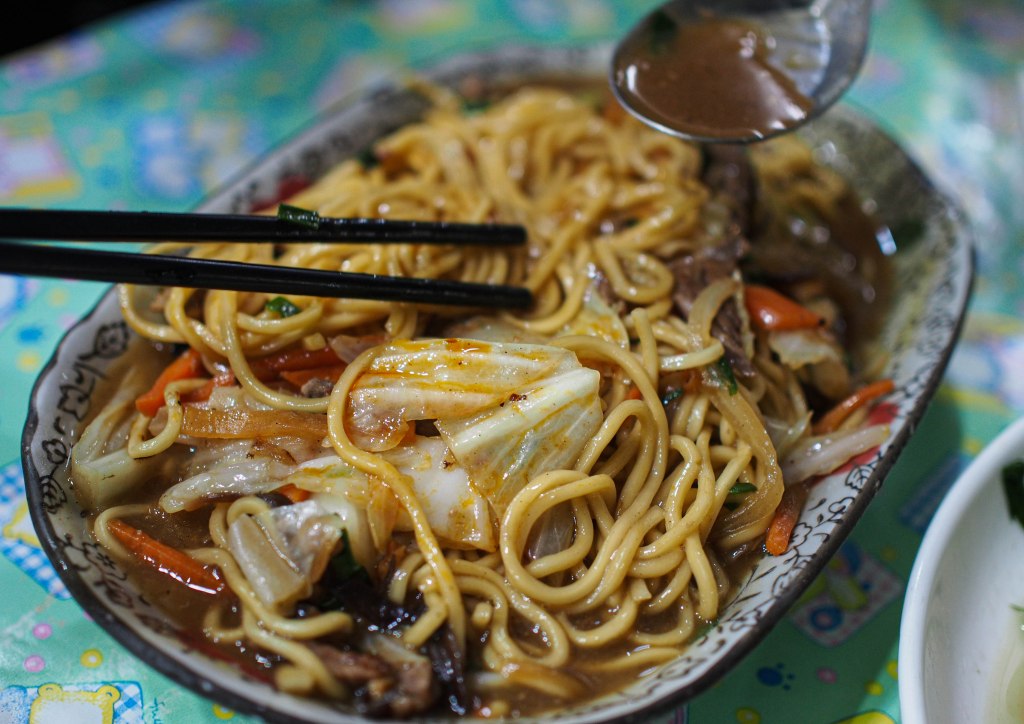
A version of 担担面dāndān miàn
It was an unlikely place to find such an exquisite bowl of noodles. Noodle shops are scattered liberally all over China, from big cities to small towns. I’m no expert on noodles, but I do know a good bowl of noodles when I eat one.
The problem with the vast majority of noodles that we eat here in the US, Chinese or otherwise, is that they start out dry. Nearly all the Chinese noodles available at Asian grocery stores are dried, though occasionally you can find “fresh” noodles in the refrigerated section. I put fresh in quotes because though they are certainly fresher than dried noodles, they are not quite like noodles made a few minutes before they are thrown into the pot of boiling water.
You can buy fresh noodles in markets in China, and they are certainly much better than dried, but still, they have been sitting around for awhile. The picture below was taken in a large open market in the center of a small town in Yunnan Province.

Open market noodle vendor
There are a dizzying array of noodles available in China, from the venerable 牛肉面 niúròu miàn of Northern China to the Cantonese classic 干炒牛河 gānchǎo niúhé to the fabulously chewy刀削面 dāoxiāo miàn of Western China. Noodle dishes are generally stir-fried or served in soup. They are all wonderful in their own ways, and it would be impossible and fruitless to try to argue which kind of noodles or which noodle dishes are the best. I guess that depend on where you are in China. For example, if you were in Lanzhou, then the best noodles would probably be a good Muslim 拉面 lā miàn.
This bowl of noodles was totally unexpected. My friend and colleague and I were in the small border town of Shangri-la 香格里拉 xiānggélǐlā (formerly Zhongdian) in Northwestern Yunnan Province. After spending several days exploring a fairly remote river valley sprinkled with Tibetan villages, we went looking for breakfast. On the main drag in town there are numerous small restaurants, many of which cater to the growing Chinese tourists. We selected a small restaurant partially by the crowds of people inside. One of the first rules of finding a good place to eat, is the number of people inside eating. If it’s crowded, there’s a good chance that the food is good, and freshly prepared. An empty restaurant is not a good sign.
Inside there were about eight small, short tables, with tiny stools. The place was run by a Tibetan couple, probably in their mid to late fifties. The man was in the tiny back kitchen cooking, and his wife scurried back and forth between the kitchen and the dining area serving food and taking money. There was no menu, which is not too uncommon in small restaurants, so we looked around to see what other people were eating. The noodles looked pretty good so we ordered a couple bowls along with a couple rounds of the local flat bread.
We weren’t sure quite what to expect. Though there are Chinese in Shangri-la, about 80% of the population are Tibetans with a few other smaller ethnic minorities. The Tibetans are not known for making and eating noodles, but this far west there could have been Muslim influences, and the Muslims know how to make noodles. We were also very close to Sichuan which is known for its spicy cuisine. The condiments on the table were pretty typical of many small Chinese restaurants.

When the noodles arrived it looked like 担担面dāndān miàn, or at least a variation of the popular Sichuan noodle dish.

The best bowl of noodles in China
It looked good; it smelled good. The tender minced pork was laced with finely shredded chili pepper and the broth was deep, rich, spicy and and a bit oily. The noodles were wonderfully chewy, yet not overly heavy. The dish was spicy but not lethal like you would get in Chengdu. When we started eating, we were both astonished how good it was. We quickly cleaned our bowls, then returned the next day, and the next for more. Notice the delicious, oily, spicy broth.

There were a couple reasons why this bowl of noodles was so good. One, the noodles were made fresh minutes before they were served. We could hear the Tibetan guy slapping the dough against the table in the back kitchen. When I was paying the bill, I peeked into the kitchen and there he was cutting the dough into thin noodles with a cleaver. Second, the food was very fresh. To get really freshly prepared food, go to a busy place. Third, there was a perfect balance of seasonings. In this case, chili pepper, garlic, sesame, maybe some ginger. The soup stock was rich, and full flavored.
My friend and I talk often about that bowl of noodles and if we’re ever in Shangri-la again, we will be sure to find that small unassuming restaurant again. I guess they don’t call it Shangri-la for nothing.


